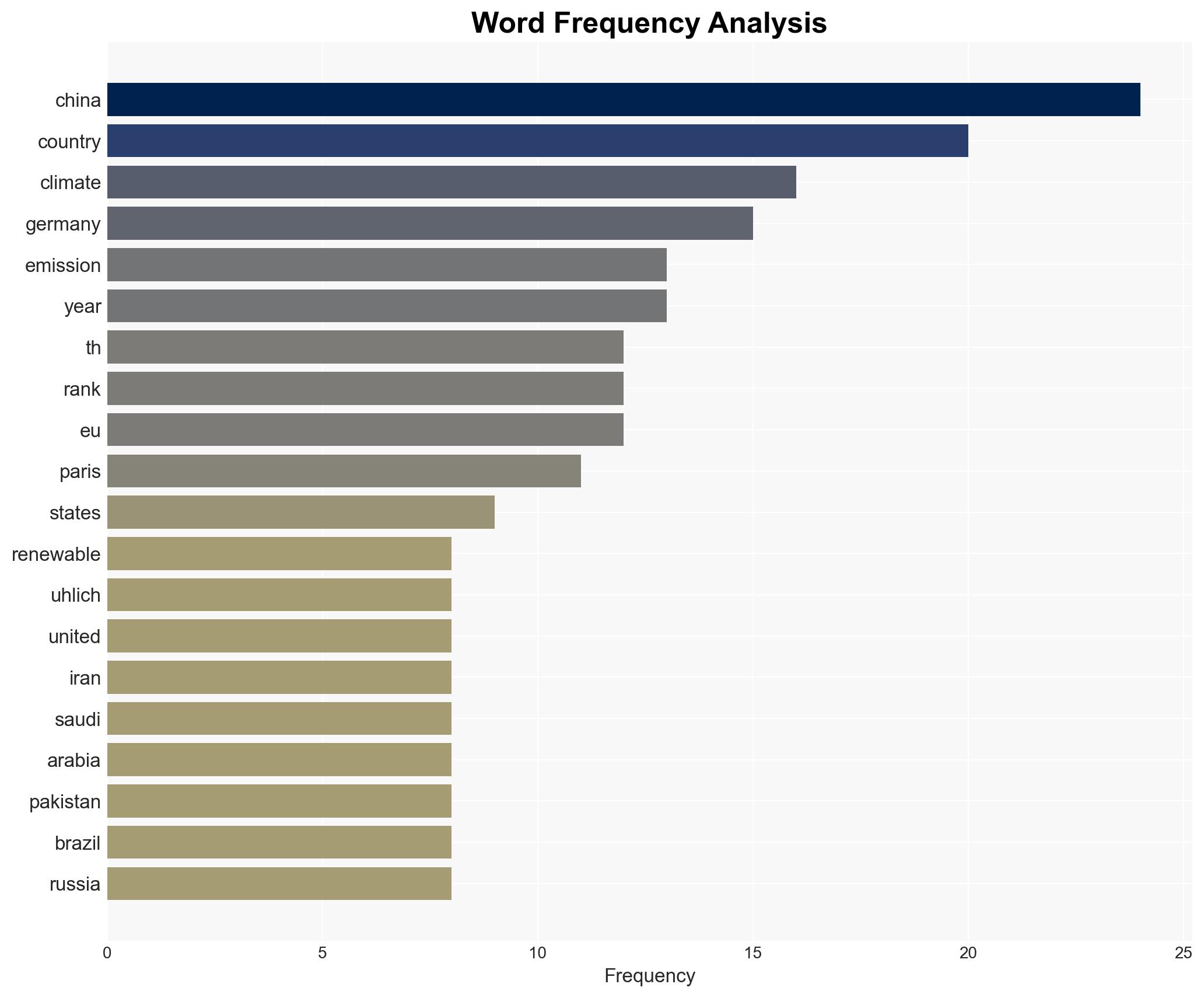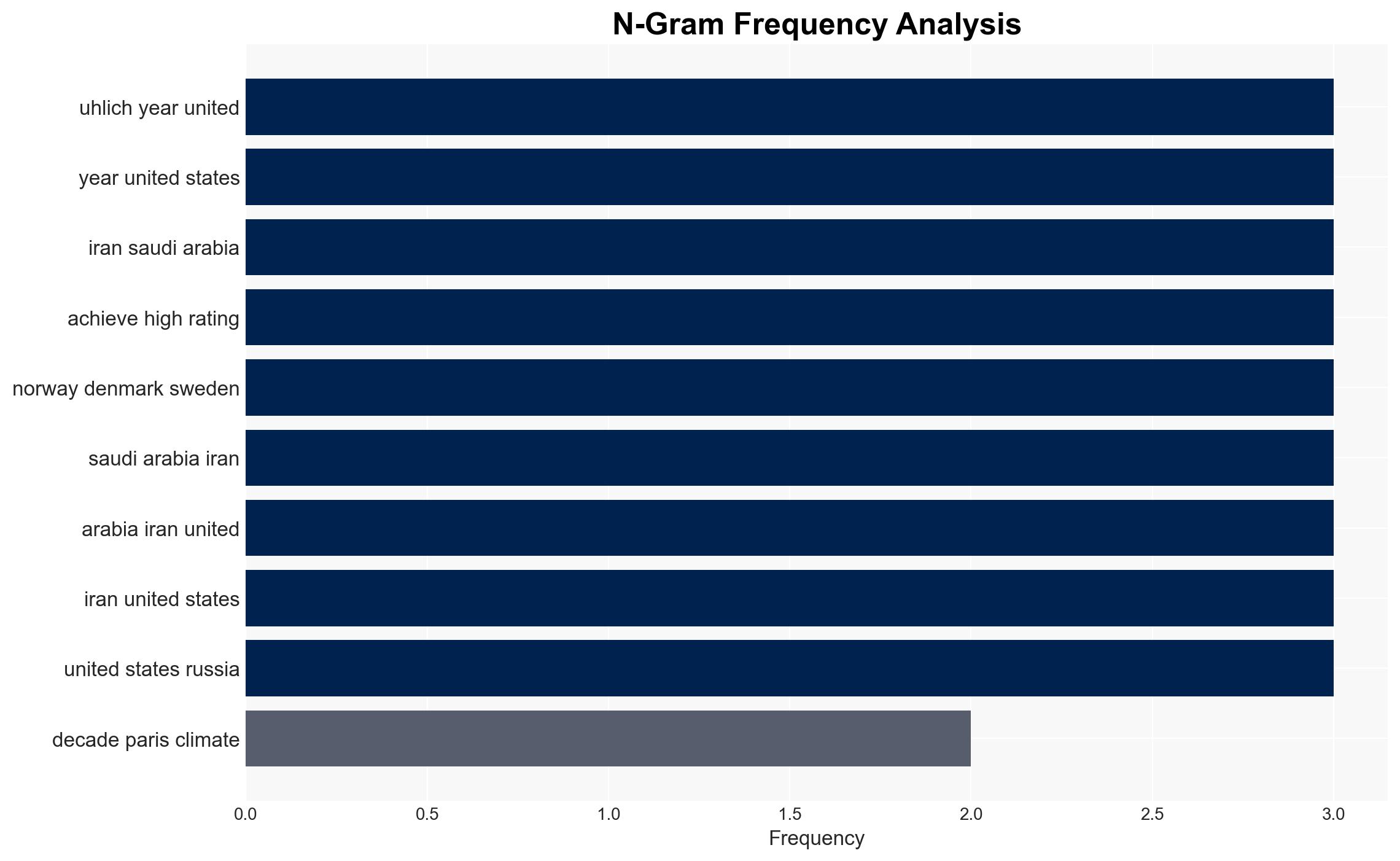Global climate progress visible but major emitters lag new report finds – DW (English)
Published on: 2025-11-18
AI-powered OSINT brief from verified open sources. Automated NLP signal extraction with human verification. See our Methodology and Why WorldWideWatchers.
Intelligence Report: Global Climate Progress and Major Emitters
1. BLUF (Bottom Line Up Front)
With a moderate confidence level, the most supported hypothesis is that while global climate progress is visible, major emitters’ hesitation and inconsistent policies significantly hinder achieving the Paris Agreement goals. Strategic action should focus on enhancing international cooperation and incentivizing major emitters to adopt more aggressive climate policies.
2. Competing Hypotheses
Hypothesis 1: Global climate progress is primarily driven by smaller nations and regions that have adopted aggressive renewable energy policies, while major emitters continue to lag due to political and economic interests.
Hypothesis 2: Major emitters are making behind-the-scenes progress that is not yet visible in public reports, and their eventual policy shifts will significantly impact global climate goals.
Hypothesis 1 is more likely due to the visible actions and public commitments of smaller nations contrasted with the documented hesitance and policy inconsistencies of major emitters like the United States, China, and petro-states.
3. Key Assumptions and Red Flags
Assumptions: The data from the Climate Change Performance Index is accurate and reflects current global trends. Major emitters’ policies are primarily driven by economic interests rather than environmental concerns.
Red Flags: Potential bias in the reporting from environmental NGOs and think tanks. The possibility of deceptive practices by major emitters to appear compliant with international standards while continuing high emissions.
4. Implications and Strategic Risks
The continued lag of major emitters poses significant risks to global climate targets, potentially leading to increased geopolitical tensions as smaller nations push for more stringent international agreements. Economic risks include potential trade barriers or sanctions against high-emission countries. Cyber and informational threats may arise from increased activism and hacking attempts targeting major emitters.
5. Recommendations and Outlook
- Enhance diplomatic efforts to foster international cooperation and pressure major emitters to adopt more aggressive climate policies.
- Invest in technology sharing and financial incentives to support renewable energy adoption in major emitting countries.
- Best-case scenario: Major emitters adopt significant policy changes, aligning with global climate goals.
- Worst-case scenario: Continued inaction by major emitters leads to irreversible climate change impacts.
- Most-likely scenario: Incremental progress with ongoing challenges in aligning major emitters with global targets.
6. Key Individuals and Entities
Thea Uhlich (Environmental NGO, Germanwatch), Niklas Höhne (NewClimate Institute), Jan Burck (Senior Adviser, Germanwatch).
7. Thematic Tags
Regional Focus, Regional Focus: Global, with emphasis on major emitters such as the United States, China, and petro-states
Structured Analytic Techniques Applied
- Causal Layered Analysis (CLA): Analyze events across surface happenings, systems, worldviews, and myths.
- Cross-Impact Simulation: Model ripple effects across neighboring states, conflicts, or economic dependencies.
- Scenario Generation: Explore divergent futures under varying assumptions to identify plausible paths.
- Network Influence Mapping: Map influence relationships to assess actor impact.
Explore more:
Regional Focus Briefs ·
Daily Summary ·
Support us





